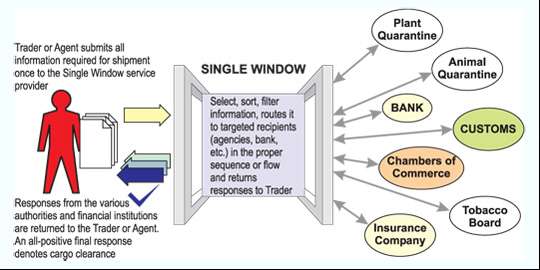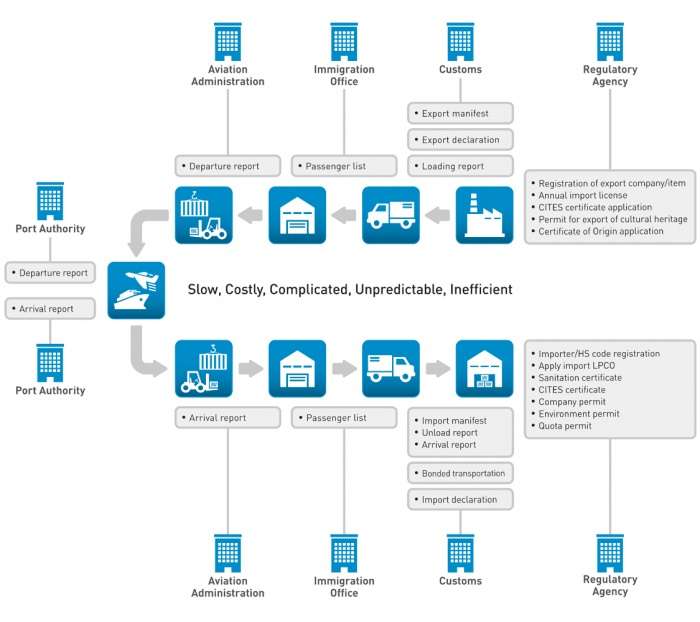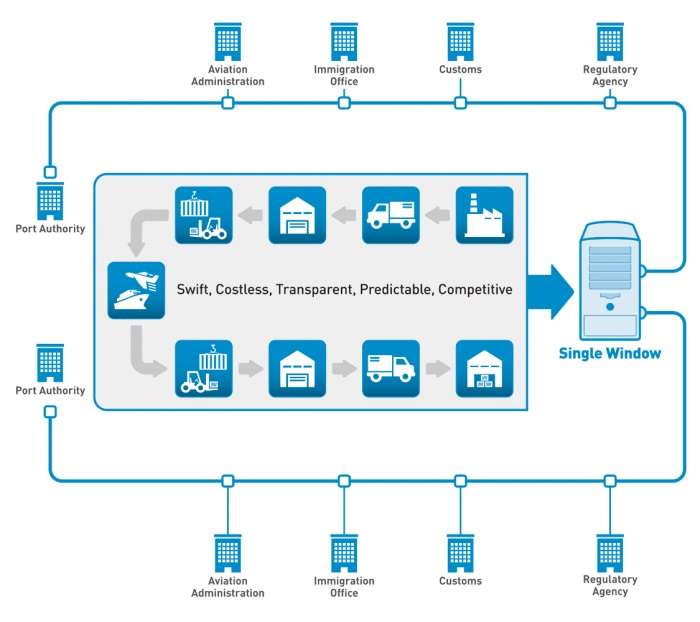Single-window system
The Single-window system is a trade facilitation idea. In simple words, it allows a user to get sufficient information from one source. As such, the implementation of a single window system enables international (cross-border) traders to submit regulatory documents at a single location and/or single entity. Such documents are typically customs declarations, applications for import/export permits, and other supporting documents such as certificates of origin and trading invoices.
Concept
The main value proposition for having a single window for a country or economy is to increase the efficiency through time and cost savings for traders in their dealings with government authorities for obtaining the relevant clearance and permit(s) for moving cargoes across national or economic borders. In a traditional pre-single-window environment, traders may have had to contend with visits and dealings with multiple government agencies in multiple locations to obtain the necessary papers, permits, and clearances to complete their import or export processes.

A common definition of the term "single window" is:
"A facility that allows parties involved in trade and transport to lodge standardized information and documents with a single entry point to fulfill all import, export, and transit-related regulatory requirements. If information is electronic then individual data elements should only be submitted once."[1]
The concept is recognised and promoted by several world organisations that are concerned with trade facilitation. Amongst these are the United Nations Economic Commission for Europe (UNECE) and its Centre for Trade Facilitation and Electronic Business (UN/CEFACT), World Customs Organisation (WCO), the United Nations Network of Experts for Paperless Trade and Transport in Asia and the Pacific (UNNExT),[2] SITPRO Limited of the United Kingdom and the Association of Southeast Asian Nations (ASEAN).
The diagram below illustrates an example of an implementation of a Single Window system within a country or economy.
There are so many actors and procedures required for international trade it can result in high costs and long waits. The reason why international trade needs that relatively more than domestic trade, is the need for the inevitable controls of cross border regulatory Agencies(CBRAs).
These inevitable various controls can be carried out through the Single Window system, supported by information technology, and is an optimized process. You can understand Single Window's Benefits from the below two diagrams, exemplifying trade with and without Single Window.
 |
 |
|---|
Benefits
A single window service aims to deliver specific benefits to the main communities and stakeholders in cross-border trade.
- Government
- Customs
- Permit-issuing agencies
- Ministries: Ministries (and other trade monitoring bodies) may be able to obtain cross-border trade-related data and statistics in a comprehensive and timely manner from the single window service provider
- Shipping and forwarding community
- Ship arrival notice
- IMO FAL forms:
- General declaration
- Cargo declaration
- Ship's stores declaration
- Crew's effects declaration
- Crew list
- Passenger list declaration
- Dangerous Goods
- Electronic ship clearance
- Shippers and traders
- Banking and insurance community
References
- "Archived copy" (PDF). Archived from the original (PDF) on 2007-03-17. Retrieved 2006-04-18.CS1 maint: archived copy as title (link)
- "UNNExT website".